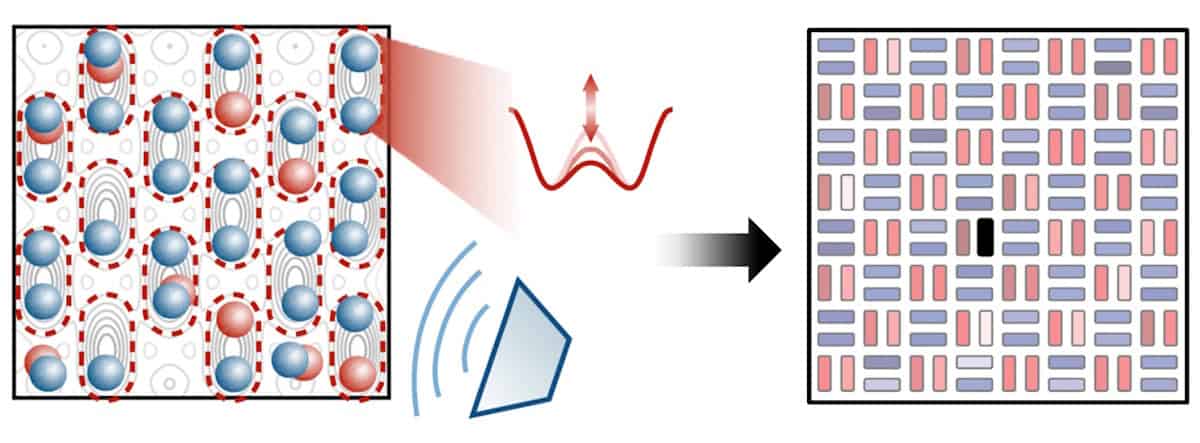Harvard and MIT Researchers Make Elusive Superconducting Signature Measurable

By Quantum Server Networks — November 2025
Understanding how electrons pair to create superconductivity has long been one of physics’ greatest mysteries. Now, a team of researchers from Harvard University and the Massachusetts Institute of Technology (MIT) has introduced a groundbreaking experimental protocol that may finally make one of the field’s most elusive quantum signatures — d-wave pairing — directly measurable. Their study, published in Physical Review Letters and reported by Physics World, could open a new chapter in understanding high-temperature superconductivity.
For decades, physicists have been captivated by the strange behavior of electrons in copper-oxide superconductors (cuprates), materials that can conduct electricity without resistance at temperatures much higher than traditional superconductors. Yet the exact mechanism behind this phenomenon remains one of condensed matter physics’ unsolved puzzles. The Harvard–MIT collaboration brings fresh insight by developing a protocol that translates abstract quantum interactions into measurable observables.
The Fermi-Hubbard Model: A Quantum Playground
The research focuses on the Fermi-Hubbard model — a theoretical framework that captures the essential physics of interacting electrons on a lattice. This model is widely regarded as the key to understanding the behavior of cuprate superconductors. In this system, electrons (“fermions”) face two competing tendencies: they can tunnel between neighboring sites, or they can repel each other when they occupy the same site.
In more intuitive terms, lead author Daniel Mark likens it to students in a classroom: “They may expend energy to switch seats (tunneling), avoid crowded desks (repulsion), or share desks with friends (attraction).” These competing interactions form the basis of emergent collective behaviors, including superconductivity.
One of the key signatures researchers seek in the Fermi-Hubbard model is d-wave pairing — a unique pattern in which the strength and direction of electron pairing vary across the lattice. Unlike the uniform s-wave pairing seen in conventional superconductors, d-wave symmetry implies direction-dependent correlations, a hallmark of cuprate materials. But despite decades of theoretical predictions, measuring this pairing experimentally has proven almost impossible — until now.
Mapping Repulsion into Attraction
To overcome the measurement challenge, the Harvard–MIT team employed a clever conceptual twist known as repulsive-to-attractive mapping. In high-temperature superconductors, electrons usually repel each other, making it hard to detect coherent pairing. By applying a mathematical transformation called a particle–hole transformation, the team reinterpreted spin-down electrons as “holes,” effectively turning repulsion into attraction.
This mapping converts the complex, long-range d-wave pairing signal into a more localized observable that conserves particle number — making it possible to detect the phenomenon through direct measurement rather than indirect inference. As a result, fragile quantum states that would otherwise decay quickly can now be probed experimentally with greater stability.
Quantum Pulses and Precision Measurement
The experimental protocol combines principles of both analog and digital quantum systems. By structuring the lattice into small subsystems — pairs of sites called dimers — the team devised a pulse sequence that manipulates the fermions’ spins and tunneling rates in a highly controlled fashion. This includes alternating microwave pulses, hopping steps (which lower potential barriers), and idling steps (which let the system evolve naturally). Each pulse is carefully timed so that, by the end of the sequence, the d-wave pairing information can be extracted simply by counting the number of fermions — a routine technique in cold-atom laboratories.
What makes this approach so promising is its experimental viability. All the components of the proposed protocol — from optical lattices to spin-resolved imaging — have already been demonstrated in existing setups. “All the experimental ingredients in our protocol have been demonstrated in existing experiments, and we are in discussion with several groups on possible use cases,” Mark told Physics World.
Why This Matters for the Future of Superconductivity
High-temperature superconductors hold enormous potential for technological revolutions — from lossless power transmission and magnetic levitation to quantum computers and ultra-efficient MRI systems. Yet, without a clear understanding of their underlying mechanisms, practical optimization remains elusive. The new protocol bridges this gap by offering a direct route to experimentally verify theoretical predictions within the Fermi-Hubbard model.
Beyond cuprates, the methodology could be applied to other strongly correlated quantum systems, enabling researchers to probe phenomena such as charge-density waves, spin liquids, or topological superconductivity. The convergence of quantum simulation and precise measurement techniques marks a turning point in how scientists explore emergent quantum matter — effectively turning complex theoretical models into experimentally testable systems.
A New Era of Quantum Simulation
The work exemplifies a growing interdisciplinary trend that merges quantum optics, condensed matter theory, and computational physics. As laboratories increasingly integrate AI-assisted data analysis and automated control systems into quantum experiments, breakthroughs like this are accelerating our path toward a deeper understanding of matter’s most mysterious phases. Harvard and MIT’s approach may thus serve as a blueprint for the next generation of quantum simulation experiments — precise, programmable, and scalable.
Original source: Physics World
This article was prepared with the assistance of AI technologies.
📈 Quantum Server Networks — Community Announcement
Over the past month, the articles on this blog have been read more than 100,000 times by a global audience of materials science and chemistry specialists.
If you represent a company, university, or research institute active in these fields and would like to include an advertisement banner here to promote your projects, products, services, software, or publications at a flexible rate, please contact:
gabriele.mogni@qscomputing.com
© 2025 Quantum Server Networks | Advancing the Frontiers of Materials Science
#MaterialsScience #Superconductivity #QuantumPhysics #MIT #Harvard #DwavePairing #FermiHubbardModel #HighTemperatureSuperconductors #QuantumSimulation #ColdAtoms #PhysicsResearch #QuantumServerNetworks #CondensedMatter #QuantumTechnology #Innovation

Comments
Post a Comment